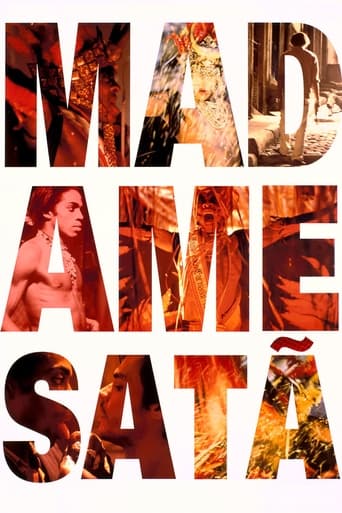Harry Mertens (harrymertens)
As a Dutchman it is hard to judge the historical content of the film. What I've seen was very interesting. Considering the fact it is made after a true story it makes it even more special. The film covers many aspects of life in Brazil in the thirties. Although it is often shown in broad lines it's convinces me. It made me think of the class struggle in my own country. In Dutch you say: als je voor een dubbeltje geboren bent wordt je nooit een kwartje (when you are born as a nickel you'll never become a quarter. In a way it is an optimistic movie. Despite of all the setbacks and jail sentences, the main character does not get broken. Madame Satá becomes a real success winning several prices in carnival parades and other events. I truly admire the actors, especially Lázaro Ramos who plays stunning. The camera-work is great. The special effects are modest and well done. The music in the film is beautiful. I really enjoyed this movie. This movie deserves a wide audience.
Claudio Carvalho
When I was a boy, Madame Satã was a legend in Rio de Janeiro. João Francisco dos Santos was born in the turn of the century, and was famous for being a very controversial person: homosexual, black, poor, artist, a very violent and excellent fighter and a symbol of Lapa, where he lived. This movie is the dramatization of the ten years before the creation by João Francisco dos Santos of the character Madame Satã, inspired in the 1930 Cecil B. DeMille's Madam Satan (unfortunately, this movie has not been released in Brazil and I have never had the chance to see it). 'Madame Satã' is another great example of the marvelous moment of the Brazilian Cinema. The direction is very precise, using old parts in the city of Rio de Janeiro specially in Lapa and Santa Teresa and a high level photography to recreate life in the 30's in Old Rio. The cast is fantastic, highlighting the performance of the stunning Lázaro Ramos, who is also the leader actor of the excellent and very recommended 'O Homem Que Copiava'. The story, as I previously mentioned, is limited to a short period before the raise of Madame Satã to the scenario of Rio de Janeiro and is very realistic, inclusive showing the homosexual activity of João Francisco. My vote is eight.Title (Brazil): 'Madame Satã'
tommyg
I felt a gap between the movie itself, and the closing credits in which later history about the Madam Sata character is narrated along with film clips of Rio Carnival. That gap is a jagged edge for me, and yet I cannot propose a smoother ending or smoother inclusion of the personality of Madam Sata into the main.Other than that comment, I was caught into the excellent casting, direction and editing. The documentary seemed to be somewhat detached in time although we knew the inclusive dates as it covered multiple issues of race, prejudice, anger, bigotry, self-identity -- and all things that are experienced or tested by humans in sexual drive and satisfaction.
It is in the latter that we definitely feel the struggle, violence, growth and pride of Joao Francisco dos Santos as a strongly driven heterosexual man that ultimately yields to his comfort in cross-dressing while maintaining a jagged, devoted relationship with Laurita and her/his child.Wonderful mosaic
mark-783
What a total surprise. One sunny Afternoon, my associate and I wander into a dark little cinema in Cannes to see a little pubicised film.From the moment the the turquoise beads on the bead curtain parted, and the rich tones of a Brazilian voice, spoke, we were mesmerised.An incredible mix of doom, dispair and triumph in abject failure and disaster.MUST BE SEEN!!!



